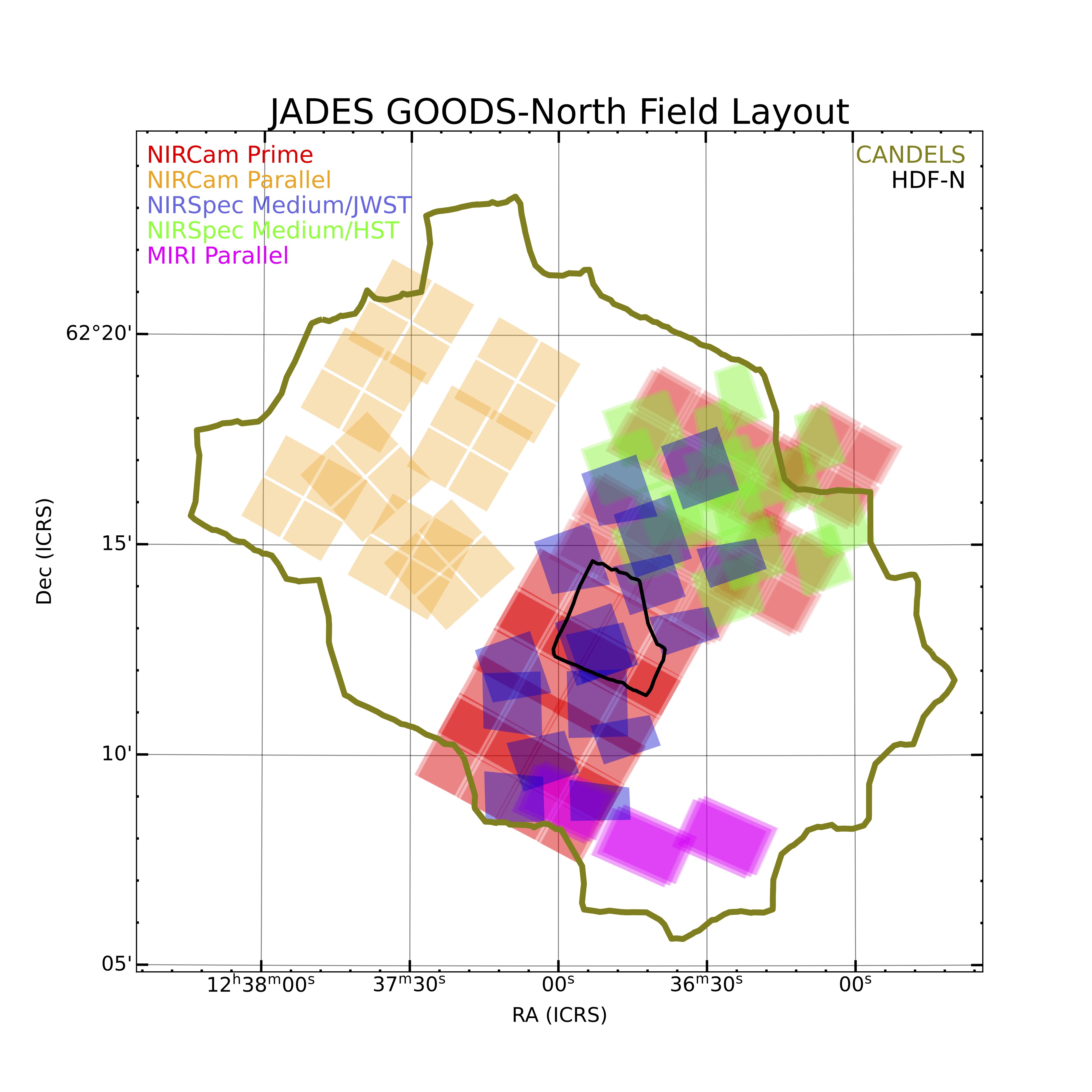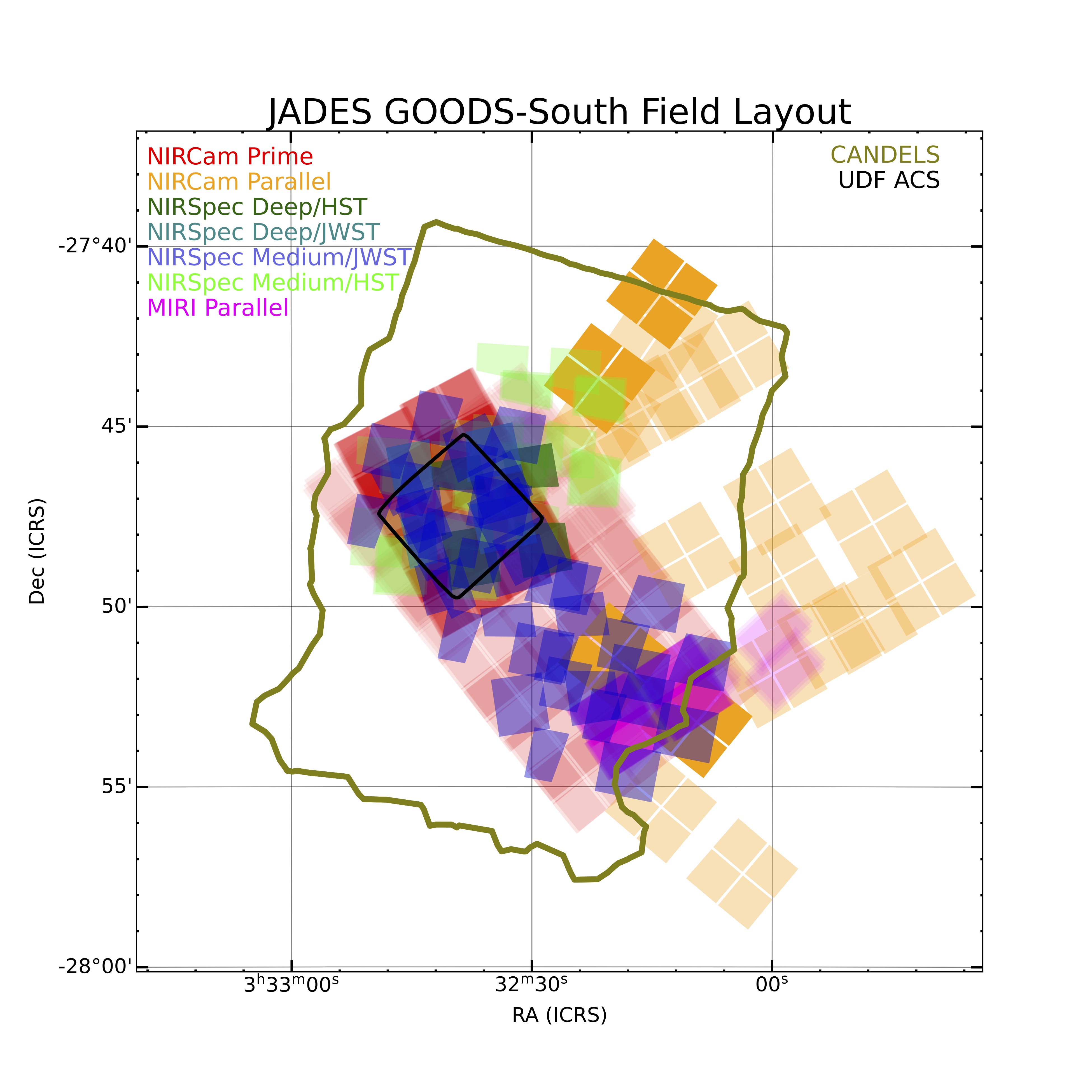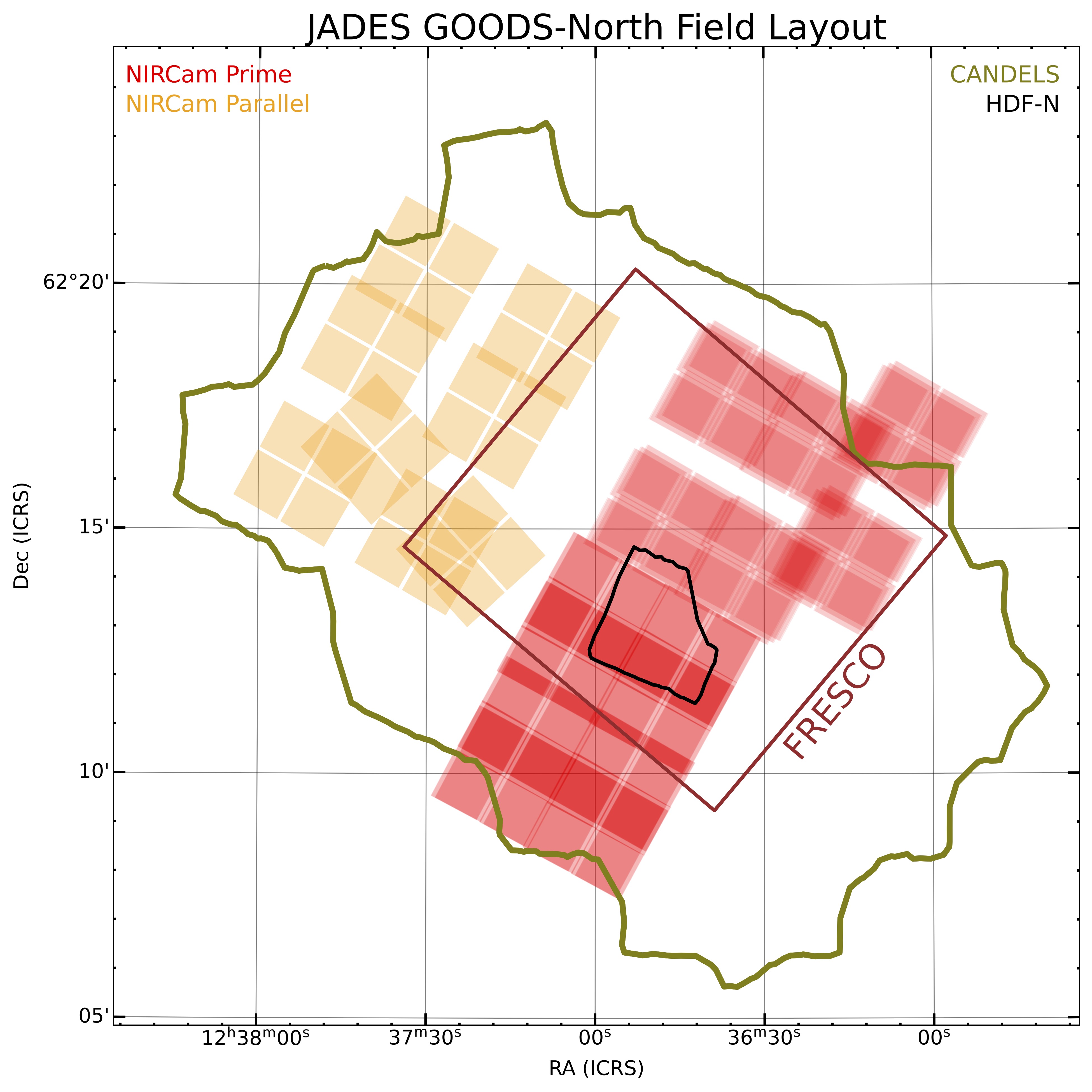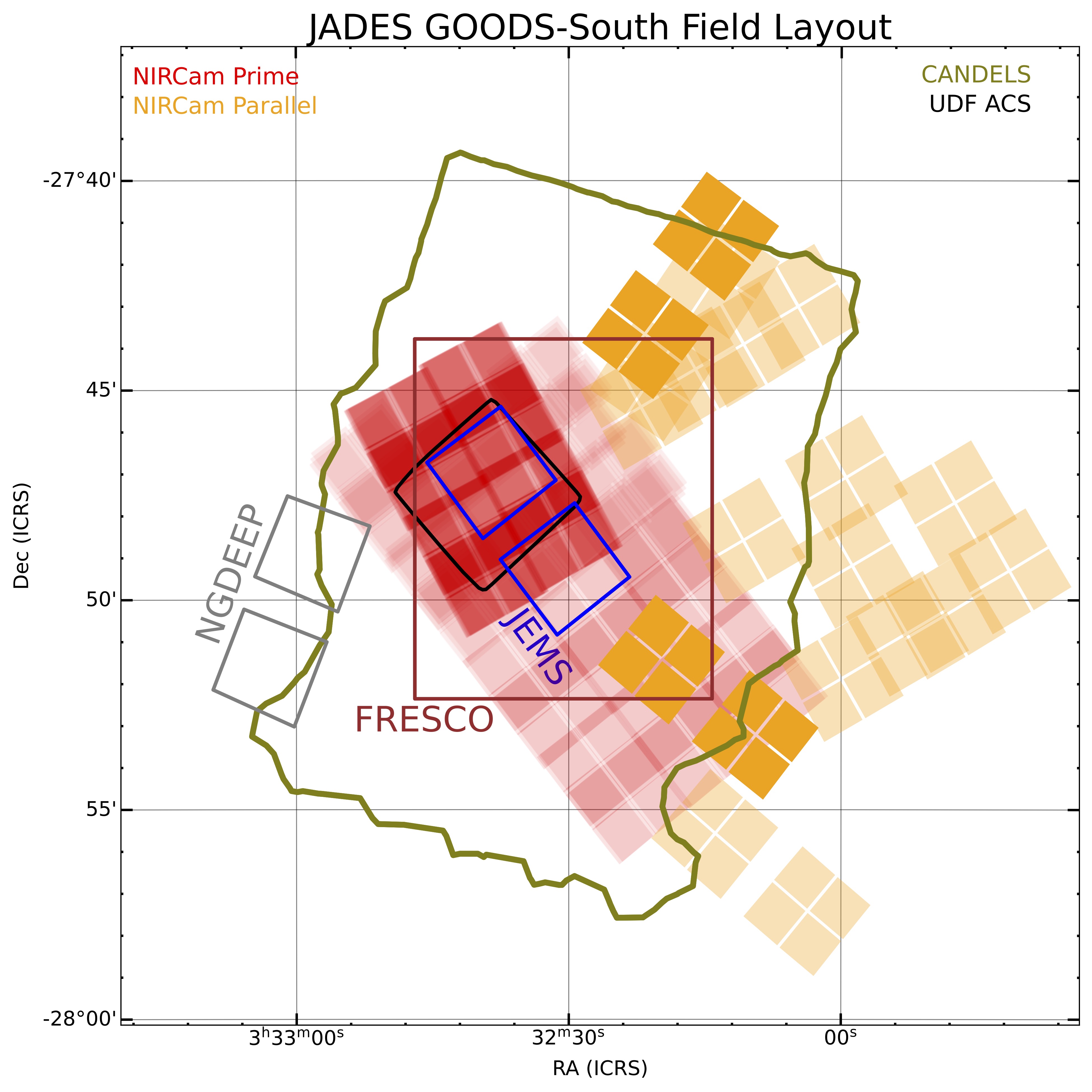Survey
Overview
The details of the JADES observing are described in Eisenstein et al. (2023, arXiv); this paper will be updated as the survey is completed.
JADES is about 770 mission hours and makes full use of coordinated parallels. About 620 hours are in GOODS-S, and 150 hours in GOODS-N. Although JADES is a Cycle 1 program, the size of the GOODS-S program proved too big to schedule in year 1. About 40% of this program was observed in Sept 2022 to Jan 2023; we plan that the rest will be observed in late 2023. The full GOODS-N program was observed in February to May 2023.
JADES GOODS-N
Here we show the footprint of the GOODS-N observing. The design features a mosaic of Medium-depth NIRCam imaging, on which we place a substantial amount of NIRSpec multi-shutter (MSA) spectroscopy. The NIRCam parallels from this spectroscopy then extends the imaging footprint.

JADES GOODS-S
The GOODS-S footprint is more complicated because in this field we also have our Deep imaging and spectroscopy. This figure shows this with different colors to distinguish Deep and Medium.
We stress that this GOODS-S footprint is not final, because the year 2 spectroscopy is still under planning. The position angles of the year 2 multi-shutter spectroscopy will depend on the assigned observing windows, and the exact locations will depend on the identification of high-priority targets. These decisions in turn determine where the NIRCam parallels fall.

Most JADES NIRCam imaging uses 9 filters: F090W, F115W, F150W, F200W, F277W, F335M, F356W, F410M, and F444W. The NIRCam Medium parallels add F070W as a 10th filter. Some of the year 1 pointings omit F335M. All observations are done with at least 6 dither locations, and often many more due to overlaps of the pointings. Most JADES NIRSpec spectroscopy uses 5 dispersers: the R100 prism, the three
R=1000 gratings G140M, G235M, and G395M, and the higher resolution G395H grating. The shallowest data omits G395H. Unlike many programs, JADES allows most of the grating spectra to overlap, so as to increase the multiplex to match that of the prism mode. Our processing uses the prism spectra to identify which emission lines belong to which grating spectrum.
JADES is conducting very deep MIRI parallels in F770W as well as medium depth pa rallels in F770W and F1280W. We were fortunate that the deep NIRCam parallel in year 1 fell on top of this deep MIRI data, making a particularly attractive sec ondary deep field.
Like many year 1 programs, JADES has had to be adaptable to respond to operational hiccups with the telescope and instruments. These are described in Eisenstein et al. (2023), but contribute to some of the irregularities in the footprint pattern.
JADES Footprint in Context
The GOODS fields have benefitted from extensive investment from many, many other observing programs across the electromagnetic spectrum. We can’t list them all! But to put our footprints in a geometrical context, we here show a few notable examples from HST and JWST.
These images show location of the JADES NIRCam data relative to the locations of the deep HST data from CANDELS and the very deep data from the Hubble Deep Field and Hubble Ultra Deep Field. We then show the footprint of the First Reionization Epoch Spectroscopic Complete (FRESCO) program (PI: Oesch, program 1895), which is providing exquisite JWST NIRCam grism spectroscopy of both fields. In GOODS-S, we also show the JWST Extragalactic Medium-band Survey (JEMS; PIs: Williams, Tacchella, & Maseda; Program 1963), which is providing deep imaging in 5 medium-bands not in JADES, and the Next Generation Deep Extragalactic Exploratory Public survey (NGDEEP, PI: Finkelstein, Program 2079), which produced a very deep parallel field of NIRCam imaging just south of JADES. The NGDEEP primary program is deep JWST/NIRISS slitless spectroscopy in the HUDF; that footprint isn’t shown here.

